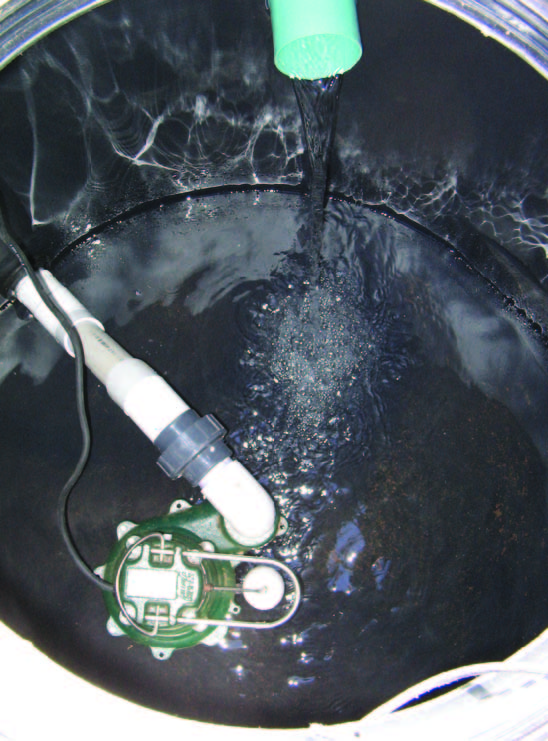The PermaDesign Weblog, with Nate Downey and Melissa McDonald!
Roof-Reliant Landscaping™ Step 18A: Water Distribution - Sump Pump

Above: A sump pump must be submerged in water in order to work.
Particular attention must be paid to the distribution component of every cistern system because this final part of the process of rooftop rainwater harvesting is typically responsible for more water waste than the other three components (collection, conveyance and storage) combined. For example, when a pressurized pipe cracks 24” below grade, it will often go unnoticed until large quantities of water have already been wasted. Likewise, when a pump or automatic irrigation system gets stuck in the “ON” position, it doesn't take long for a full cistern to become empty. And if you get distracted and forget to turn off a hose running in your garden, your entire cistern could be drained in a short period of time.
The distribution of harvested water can be divided into two basic processes: the pumping of and delivery of water. Most conventional cistern systems require a pump to provide hydraulic lift and either a garden hose or a drip irrigation system to deliver water to the root zones of plants. Distribution systems can be manually operated, or they can be easily automated for an additional cost.
This blog provides an overview of the components and functions of typical rainwater harvesting distribution systems.
Conventional Distribution Systems
In conventional distribution systems, water is lifted from the cistern by one of two types of electric pumps—a sump pump or an inline pump. After it is lifted out of the cistern, water is then typically delivered to the root zones of the plant material via two different irrigation techniques—hose watering and/or drip irrigation.
Sump Pumps
Sump pump systems are the least expensive kind of electric pumping systems available. Sump pumps must be submerged in water in order to work. A simple sump pump can be purchased for under $100 and be easily connected to a garden hose.
Note that the pump is kept slightly off of the bottom of the tank to prevent the intake of sediment and, therefore to reduce the frequency of having to clean, repair or replace the pump. The greatest expense associated with these types of systems is usually the hiring of a licensed electrician to connect the pump to the electricity in your home and to provide a safe and convenient ON/OFF switch. Another expense is the installation of a frost-free hydrant (also known as a hose bib), which does not require a licensed plumber or irrigator as long as the cistern is not connected to other water systems such as a private well or a local utility company.
All systems should provide relatively easy access to the cistern’s serviceway so that your pump can be easily monitored, maintained, repaired and/or replaced. Inside the cistern, the sump pump should be attached to a cable, wire, rope or chain that can be used to remove the pump for such purposes.
02/27/2016 | (0) Comments










Comments